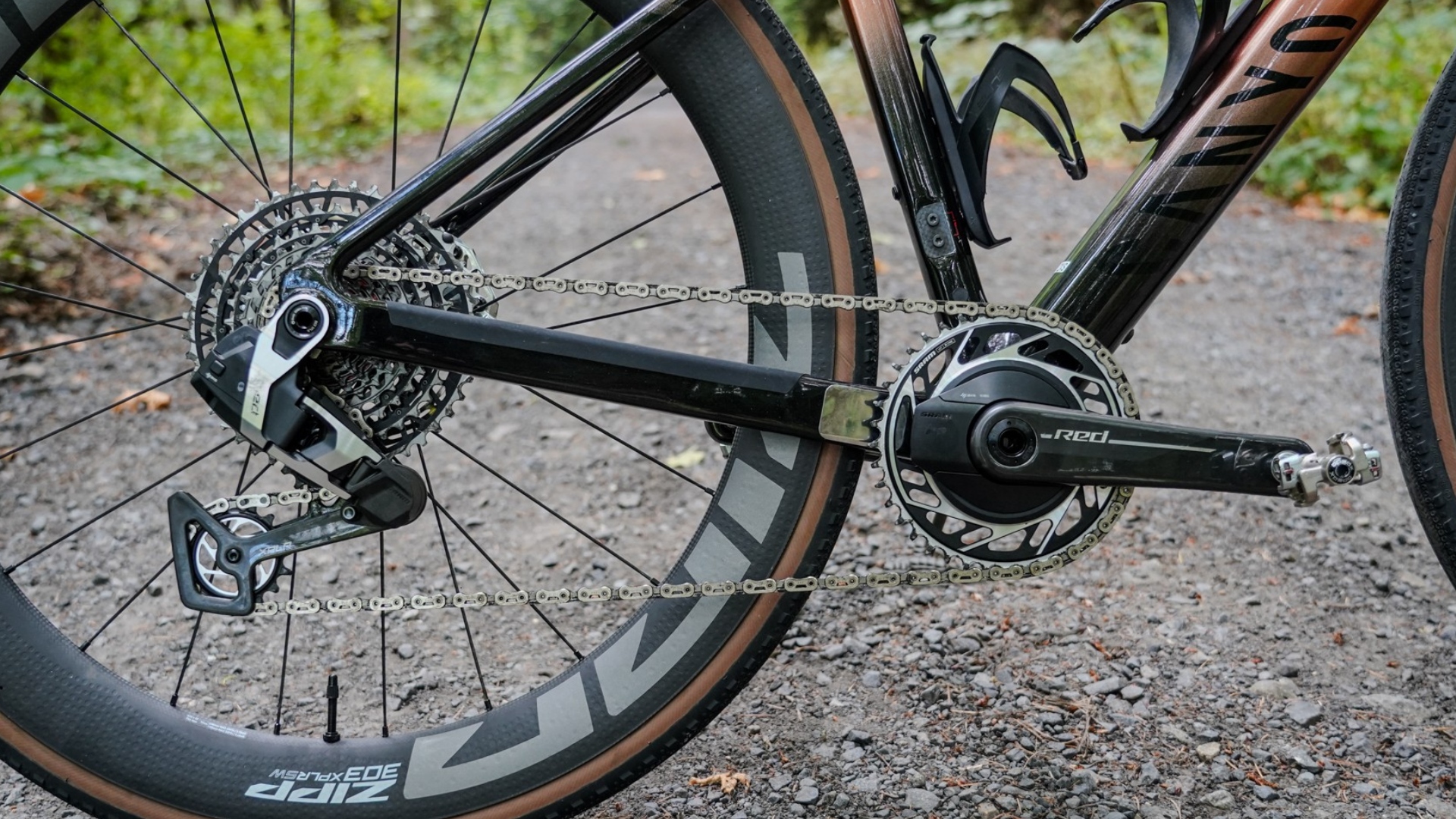
In recent years, Unbound has become the world's biggest and most prestigious gravel race. Along with launching rider careers, it has also become a testing and proving ground for the latest cutting-edge gravel tech. For the eagle-eyed among us, there's a good chance you may spot something new or unreleased. At this year's event, I got lucky early on when, on a shake-out ride, I spotted something new aboard the bikes of pro riders Haley Smith, Keegan Swenson and Russel Finsterwald, among others.
What at first glance looked like a SRAM mullet build, which features a 12-speed mountain bike transmission rear derailleur, was, in fact, a new gravel drivetrain altogether. A closer look at the UDH-mounted derailleur, the number of rings on the cassette, and the teeth on the biggest cog confirmed it: this was the unreleased 13-speed SRAM Red XPLR AXS we'd heard rumours about.
Today, with the official launch of the SRAM Red XPLR AXS products, we're finally able to dive into the weeds of this top-tier gravel racing drivetrain, and there's a lot to talk about.
I'll give you an overview of what's new, how it rides and whether I'm ready to put my existing bike on the market so I can switch over to this new UDH-only groupset.
Introducing: SRAM's 13-speed Red XPLR AXS gravel drivetrain
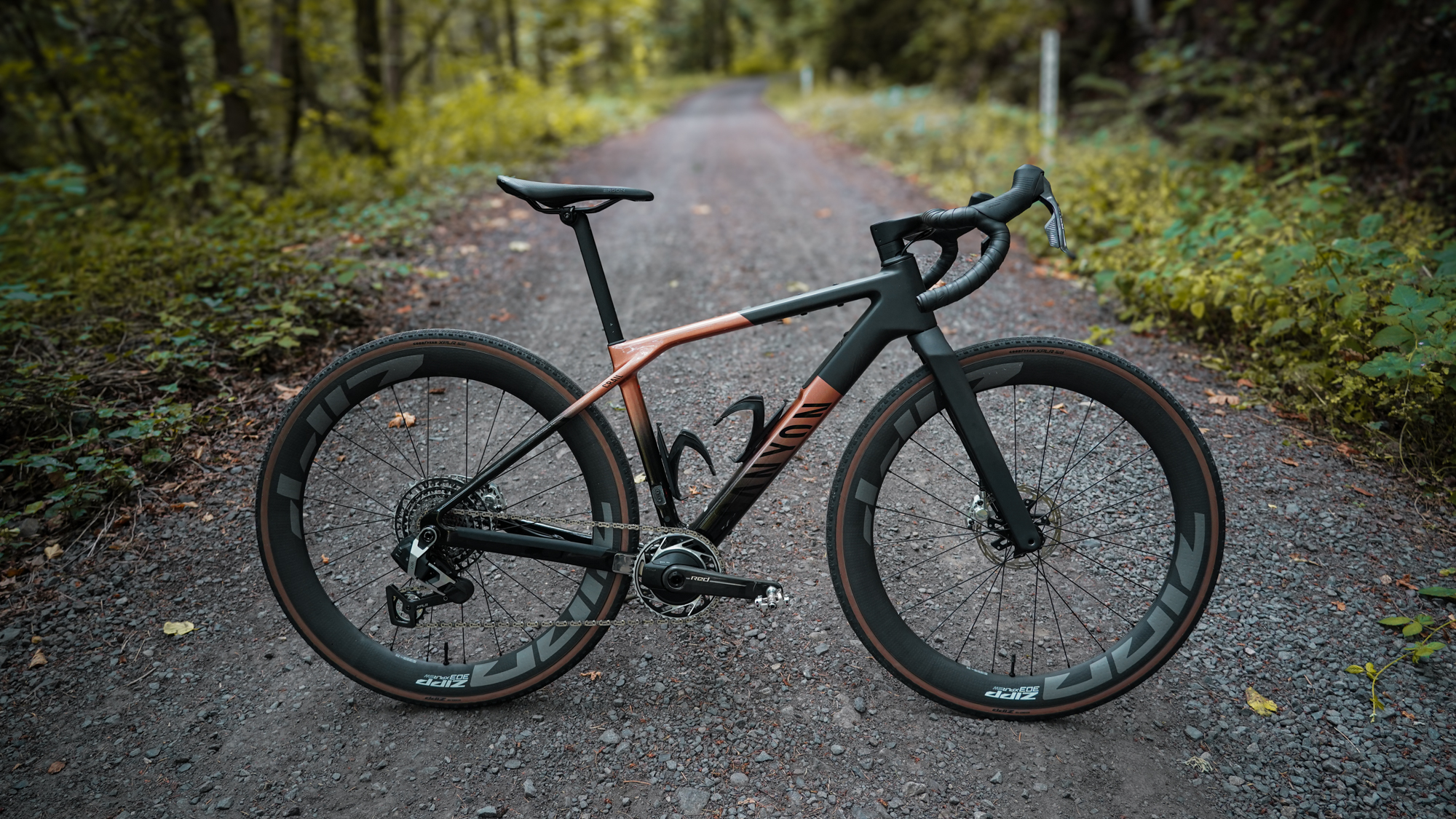
Red XPLR AXS is SRAM's most advanced electronic and wireless gravel groupset yet. Weighing just 2,476 grams with a power meter (2,398g without), it's the lightest gravel groupset SRAM has ever produced, while also being robust and adding a 13th cog. It also features SRAM's best brake callipers and controls yet, but the hanger-less interface comes with its own set of benefits…and drawbacks.
SRAM's 13-speed Red XPLR AXS groupset: what's new
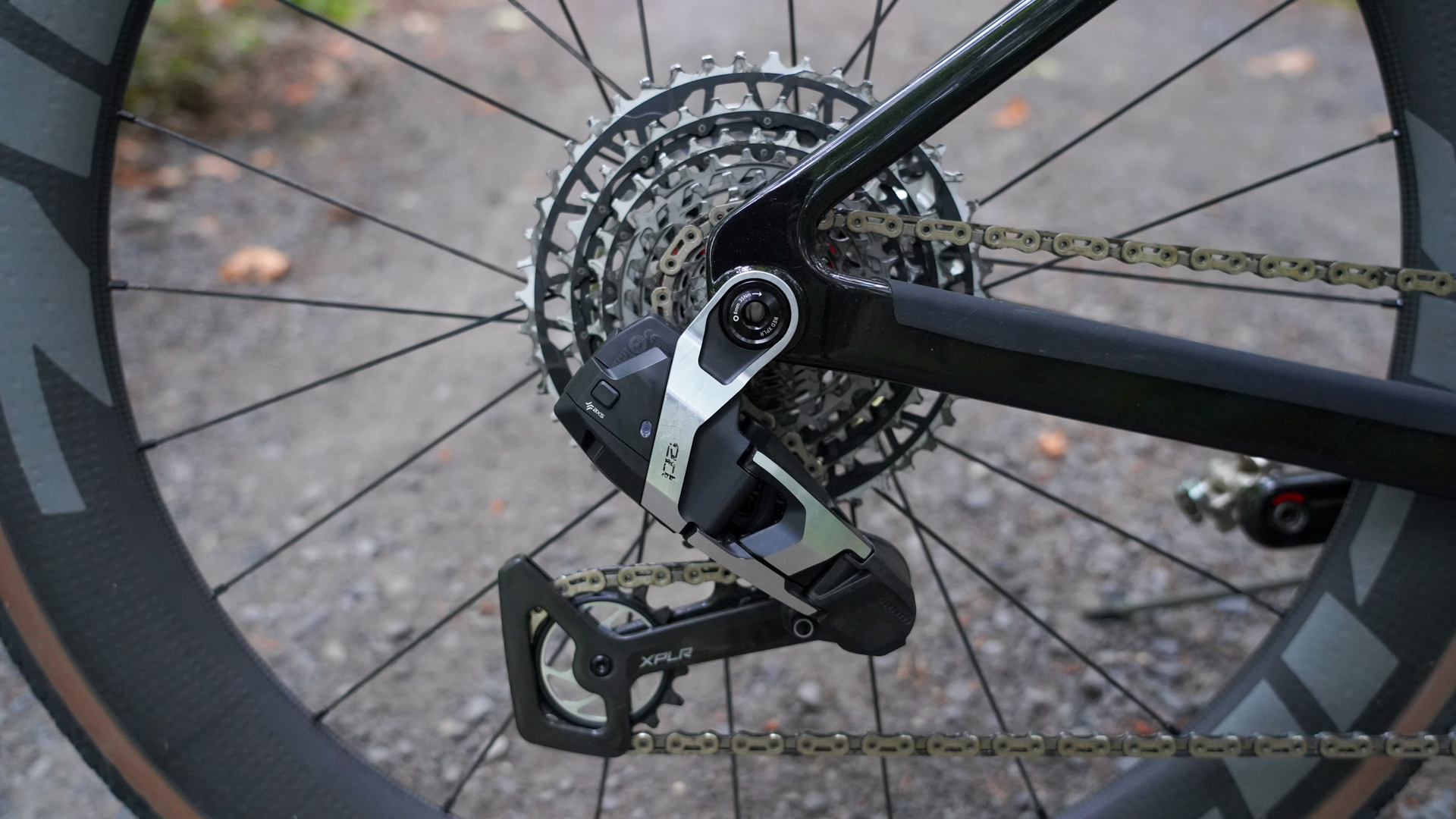
13 speeds
This is SRAM's first 13-speed speed drivetrain. While Campagnolo was the first to produce a 13-speed, superlight gravel groupset, the Ekar groupset is, as of yet, mechanical only.
Gear range
The XPLR cassette now goes up to a 46t, compared to the previous 44t, for a gear range of 460%.
The XG-1391 XPLR E1 13-speed cassette has the following gear progression: 10, 11, 12, 13, 15, 17, 19, 21, 24, 28, 32, 38, and 46. Note that only the 12 and 46 are new.
For comparison, the existing 10-44t XPLR cassette offers a 440% range and the following cogs: 10, 11, 13, 15, 17, 19, 21, 24, 28, 32, 38, 44.
The Eagle cassette, popular with those wanting the biggest (climbing) gears, offers a 500% range with the following gear jumps: 10, 12, 14, 16, 18, 21, 24, 28, 32, 36, 42, 50
The cassette remains XDR compatible.
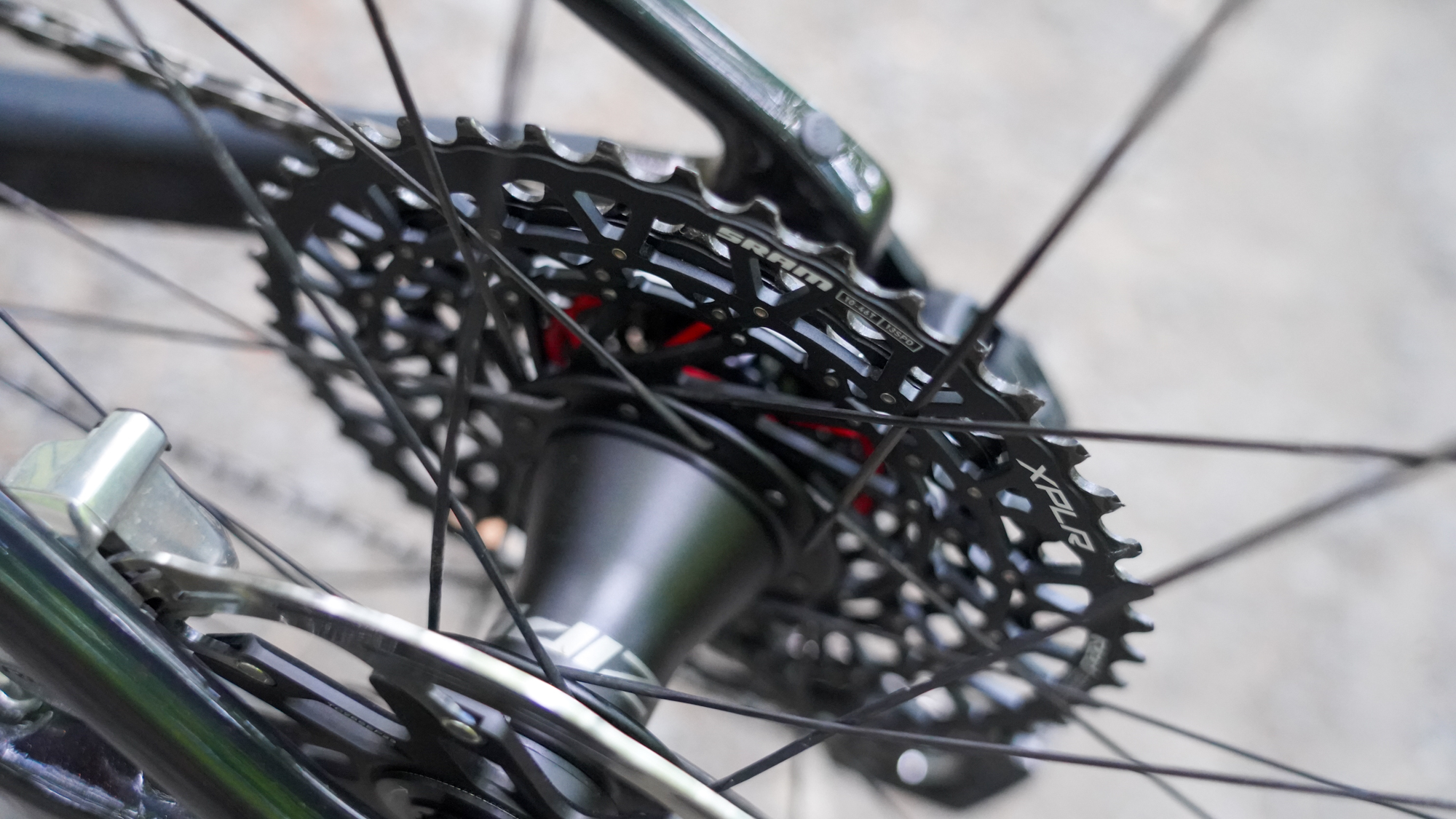
Weight reductions
The new groupset is at least 100 grams lighter than its predecessor and even lighter than the new SRAM Red AXS road groupset.
Hanger-less, UDH-only rear derailleur
Taken from the world of mountain biking, the Full Mount derailleur is attached directly to both sides of the rear dropout to create a rock-solid connection and eliminate derailleur hangers altogether. Because of the precise alignment of the derailleur and the cassette, limit screws and B-link adjustment are no longer needed either. Whether knocked about in travel or crashed during a race, the derailleur will continue to perform and even sports a neat reset function. More on that below.
There's also an MTB-inspired clutch spring for superior chain management and retention.
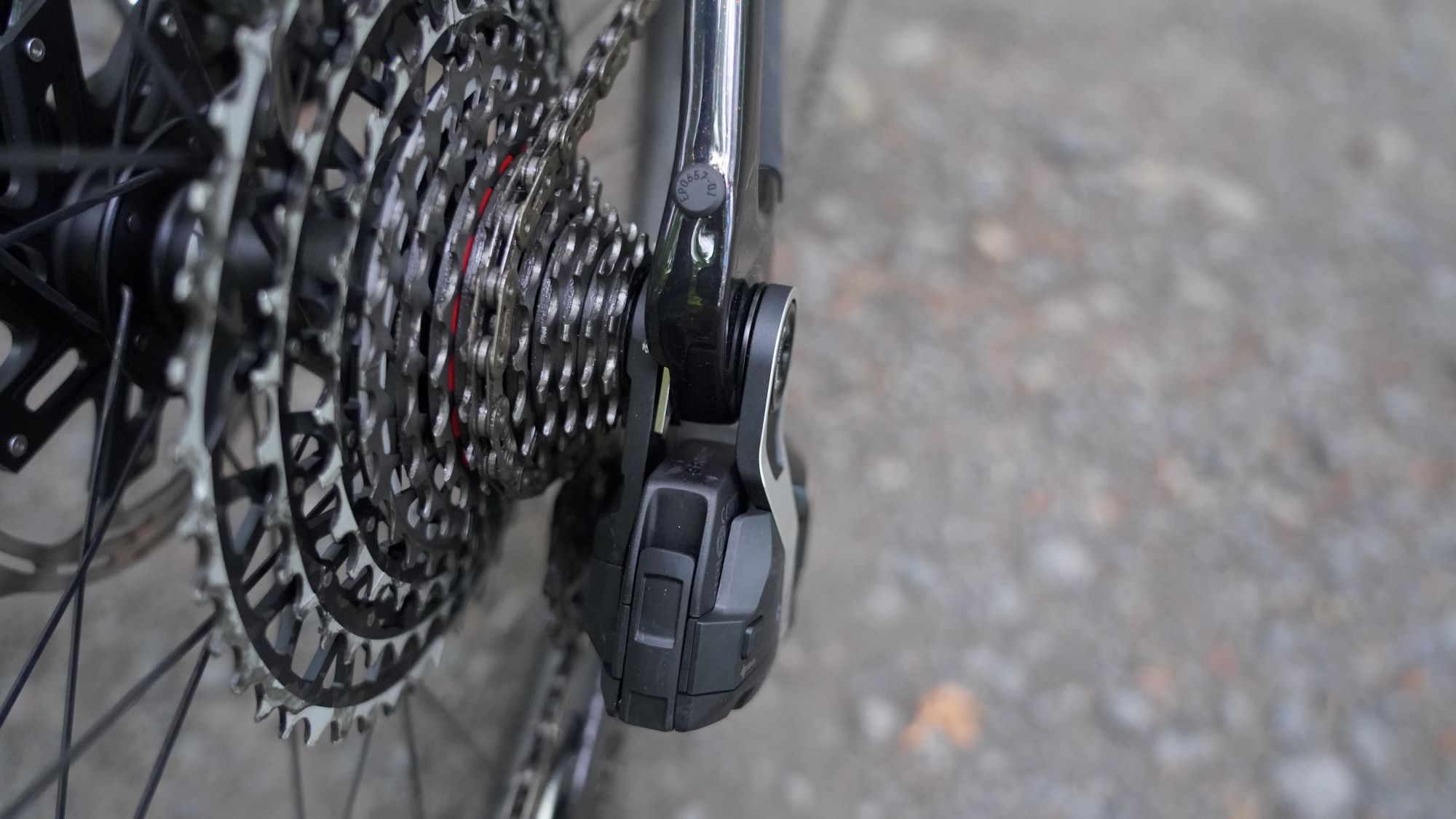
A power meter with replaceable chainrings
Up until now, some SRAM Red power meters had a major drawback: fully integrated chainrings. Designed to obtain the lowest possible weight and the highest level of accuracy, the whole unit has to be replaced whenever the rings wear out. You also can't just swap chainrings for preferred gear ratios on different terrains. The new Red XPLR AXS 1x Power Meter luckily comes with a spider-based power meter with removable and replaceable Thread Mount chainrings. The 1x aero power meter, however, still has a fully integrated ring.
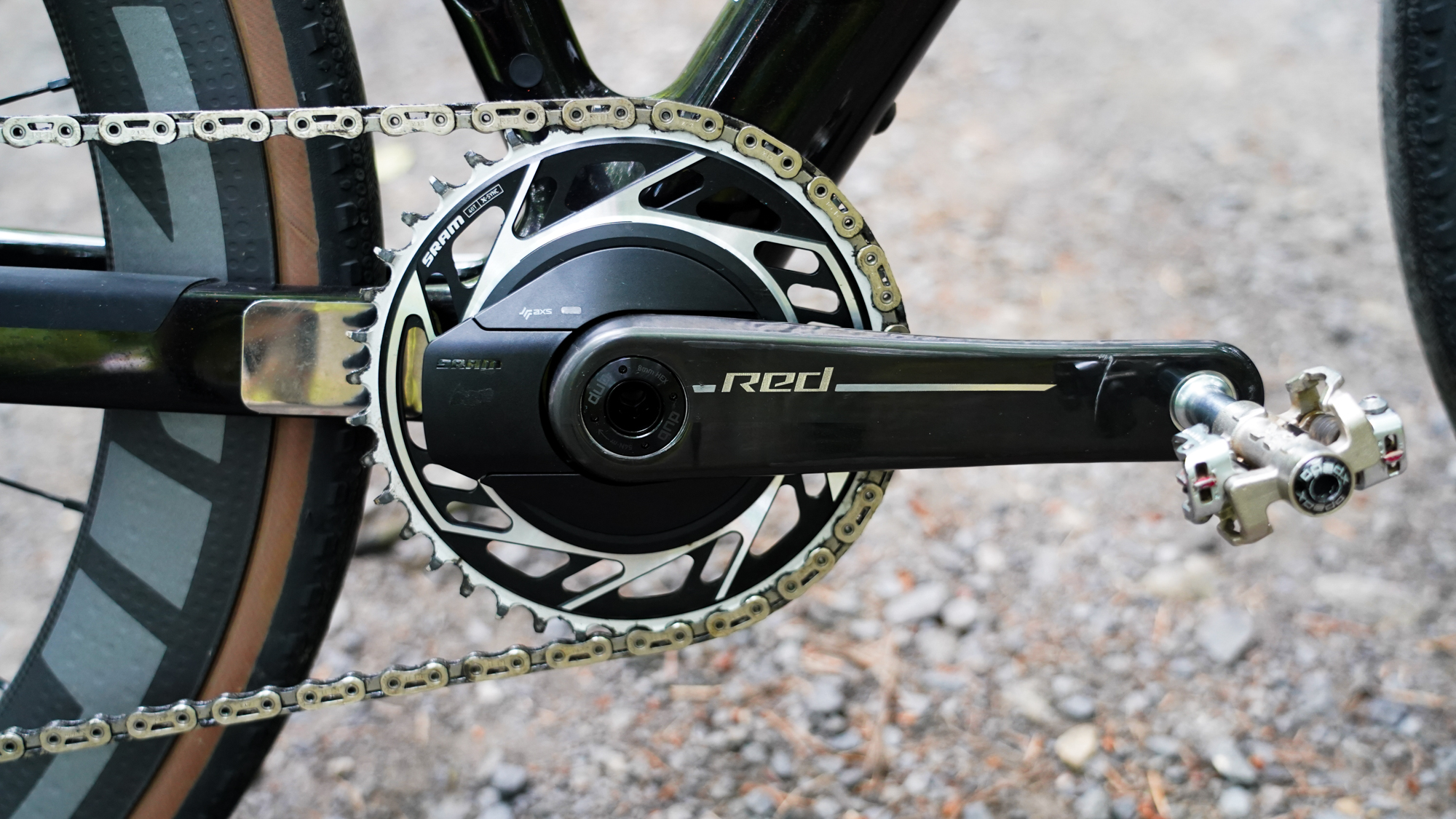
SRAM's 13-speed Red XPLR AXS groupset: what's not new
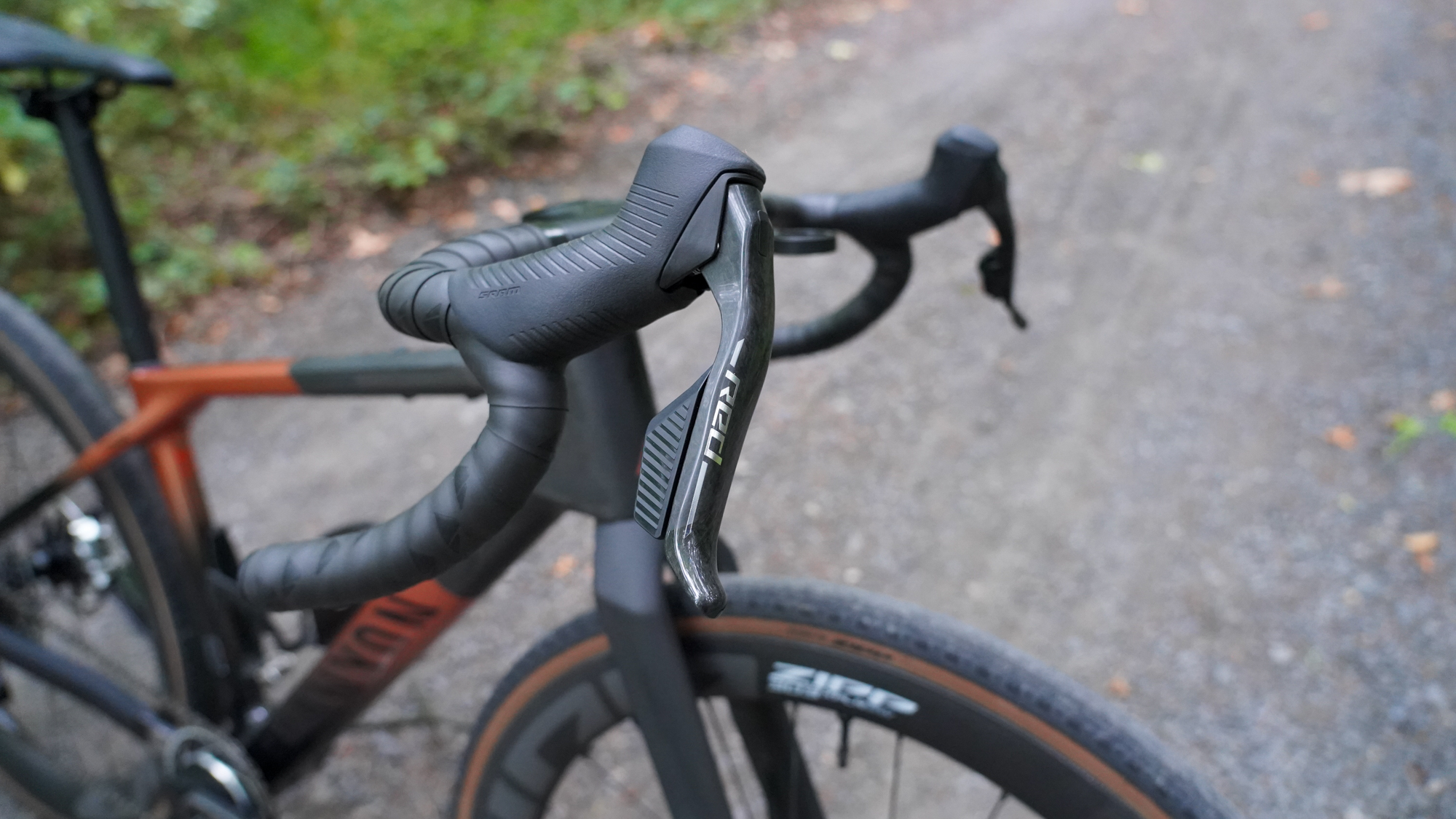
Certain components were carried over from existing product lines, including:
Brake calipers and shift-brake levers
I was very excited to see that the new brake calipers and shift-brake levers from the recently released Red AXS road groupset were carried over to this groupset. Those of us here at Cycling Weekly who have had the pleasure of using them all agree: they're simply fantastic.
The shift-brake controls and hoods underwent a total aesthetic and ergonomic redesign, complete with the repositioning of the hydraulic brake master cylinder, improved hood angle, and the addition of hood-based bonus buttons. Lean and elongated, the top of the hoods are about half as tall as its predecessors – a most welcomed change.
The brake callipers feature a lighter, fully aluminium body and inside, the pistons were repositioned further up in the caliper body to allow force to be applied nearer the edge of the rotor.
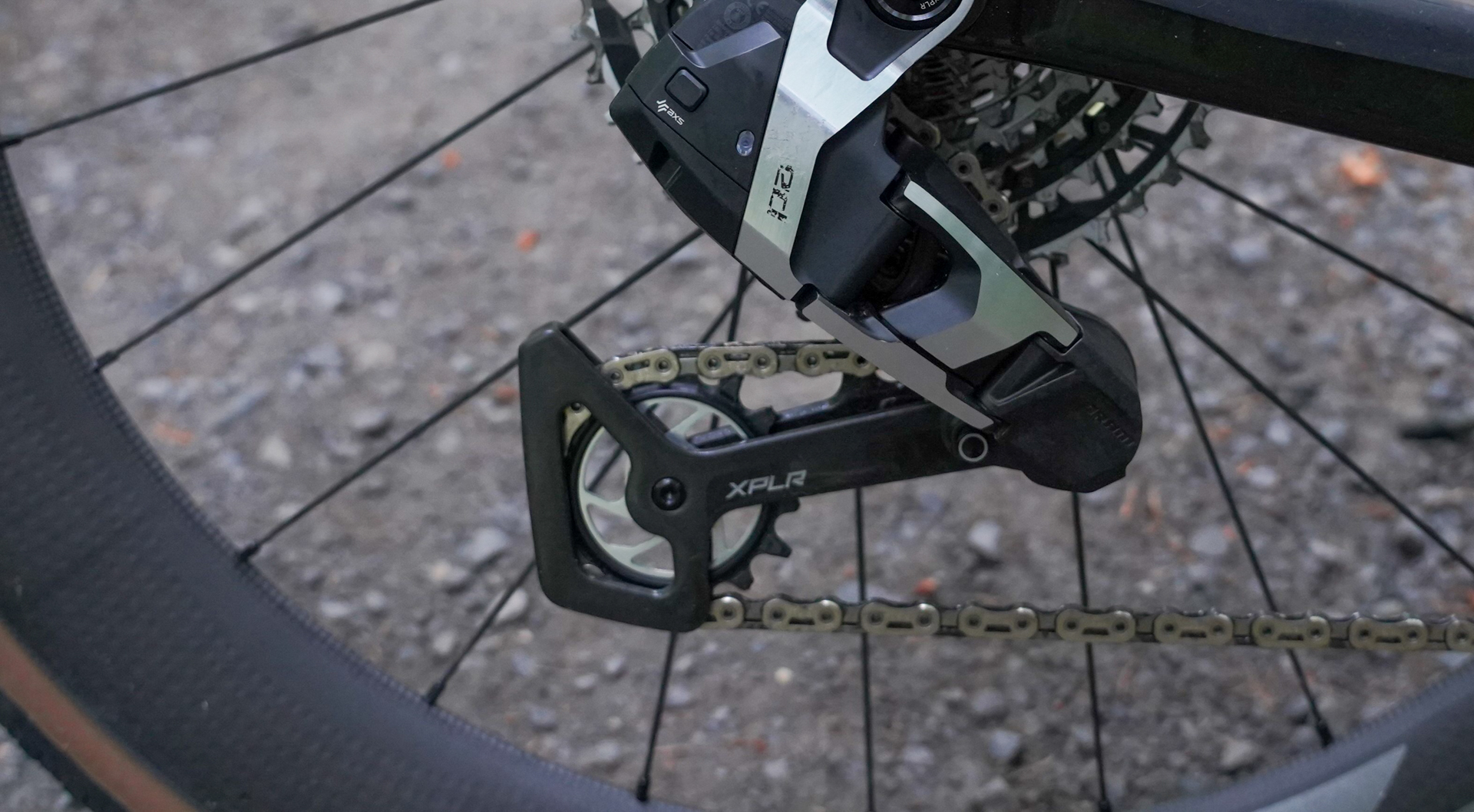
Magic Wheel
Taken from the Eagle Transmission mountain bike line, the Magic Wheel is an oversized lower pulley wheel made of two parts. These two parts are designed to spin together unless something lodges in the inner part of the pulley wheel. At this point, the outer part of the pulley wheel will continue to spin even if the middle part is clogged up with dirt or you've caught a stick.
How it performed
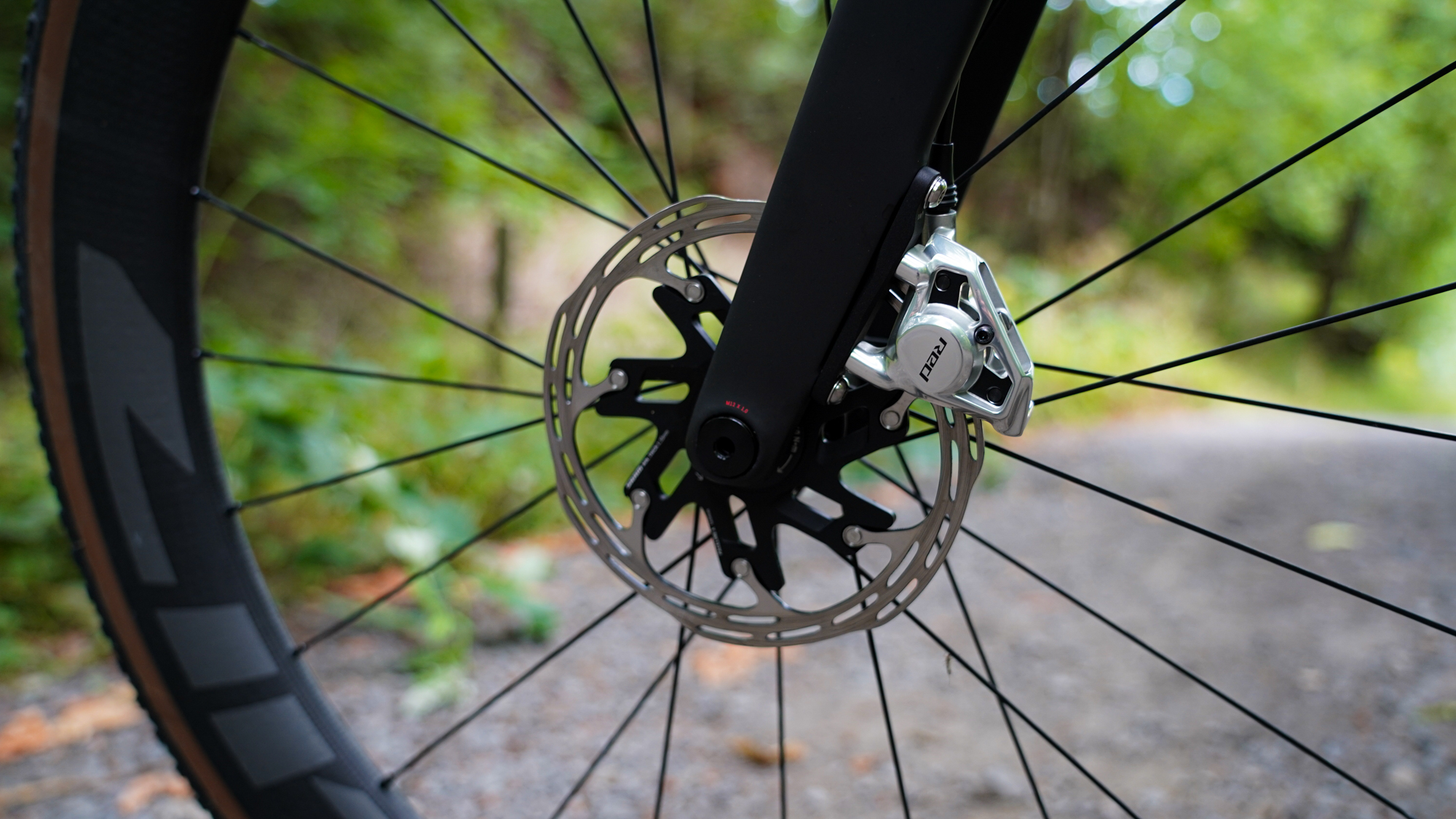
"Bring on the sticks, stones, and airport baggage abuse. The Red XPLR AXS rear derailleur will happily take it all," SRAM boasts in its marketing copy. And I sure took that to heart when the first long outing on my test bike quickly turned into a Type 2 ride. You know the kind—one where you get your daily step count in and return looking like your shins had picked a fight with a feral cat.
Just 10 miles into the ride, I managed to get a stick stuck in my derailleur and the shifting was wonky for the remainder of the day. So much for those claims, I thought until I discovered the derailleur's very neat impact reset function.
Taken from the SRAM Eagle Transmission, the Red XPLR AXS derailleur mount is designed to rotate in the event of impact, moving your derailleur away from danger. It can then be reset to the correct position after impact. To do this, you'll need to first check to see if the derailleur has indeed rotated. There are hash marks on the back of the derailleur, specifically on the knurled ring and the Full Mount. If these are not aligned, then a reset is needed. To do so, you simply loosen your rear thru-axle by a quarter to half turn and the derailleur will snap back into place. Retighten the thru-axle, and off you go. Pretty cool.
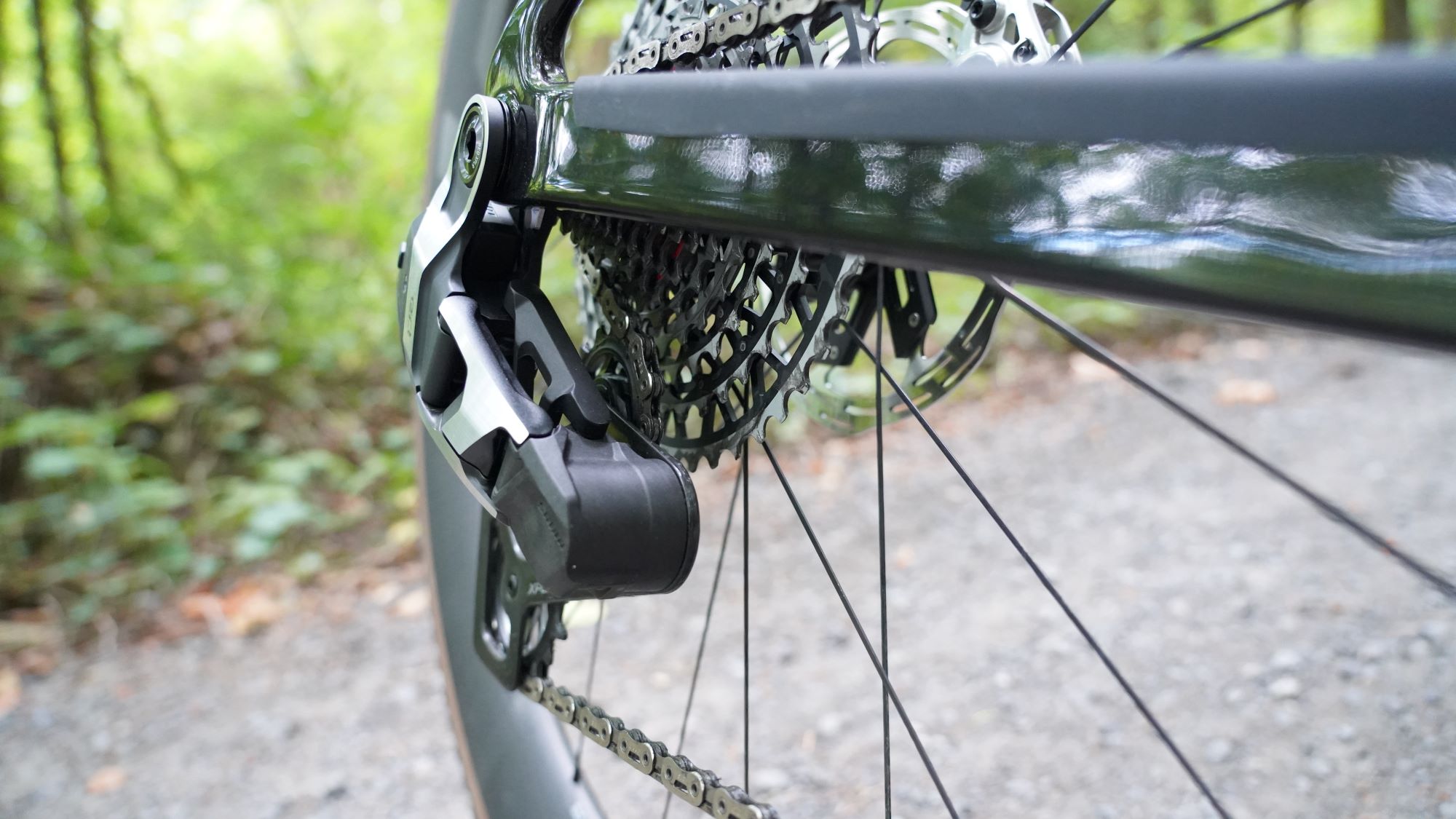
Once working as it should, the shifting impressed with its crispness and reliability. It feels wonderfully smooth, even to get across the biggest gap between the 38t and 46t.
I know shifting on SRAM's Transmission groupset received mixed reviews, with some lamenting the slow speeds. Fortunately, the Red XPLR AXS performs with ample speed, though I will note that the multishift down the cassette performed quicker and better than the multishift up the cassette, which struggled with the bigger rings.
After my initial stick encounter, no amount of rocky gravel or rooty singletrack managed to upset the derailleur's performance and the MTB-inspired clutch ensured the chain stayed taught, always.
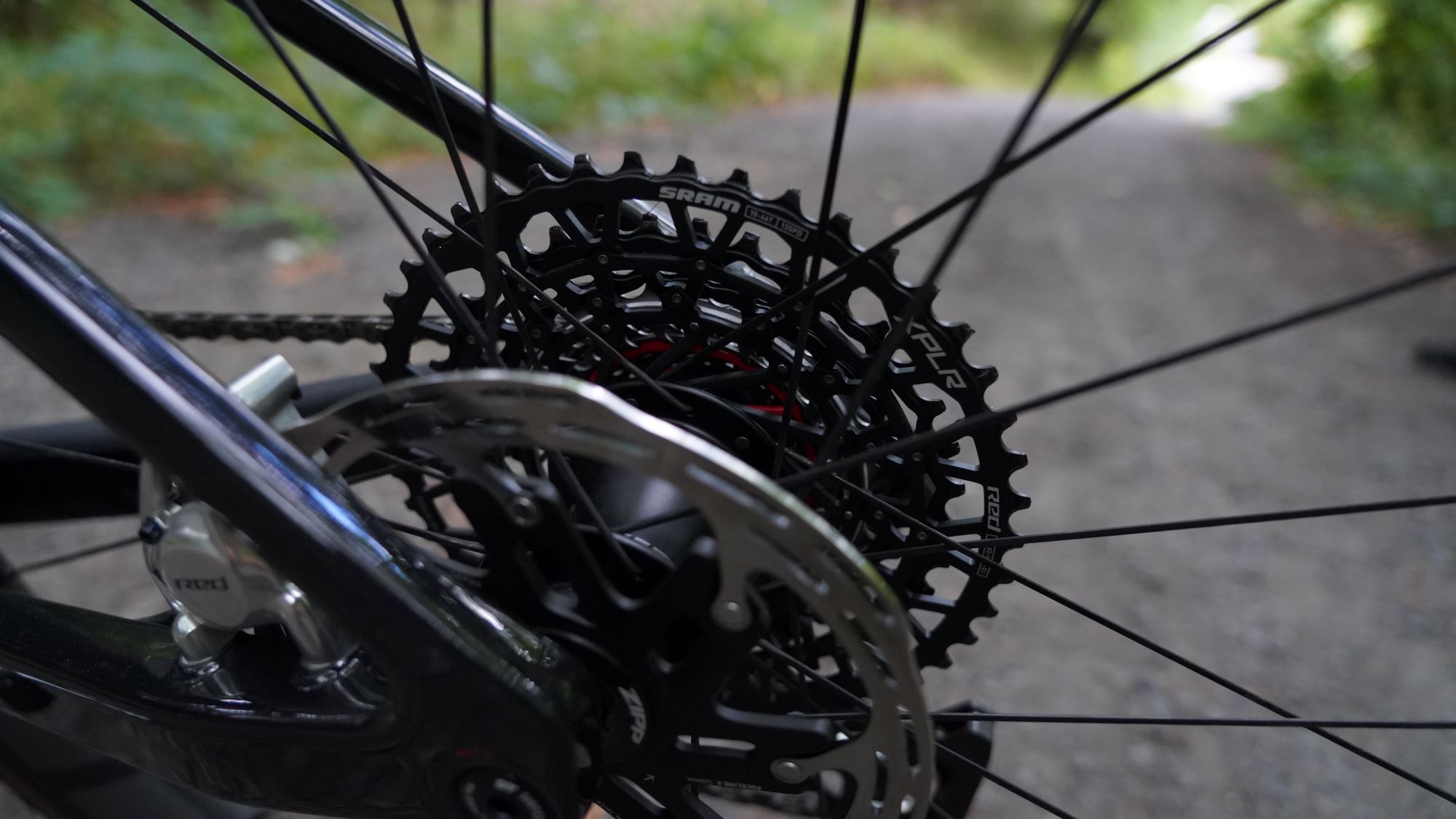
The tight gear jumps on the cassette are very pleasant. With this new 13-speed cassette, SRAM aimed to give consumers "the climbing gears you crave on gravel and the tight jumps you need on spicy sprints." What it's created is a cassette that falls somewhere between the existing 12-speed 10-44t XPLR cassette and 10-50t Eagle cassette. It's got 20% more range than its 12-speed sibling and 40% less range than its mountain bike cousin. The only real change over the existing cassette is the addition of a 12t cog and the replacement of the 44t with a 46t cog.
Only the lower end of the cassette gets improved gear jumps. On the opposite end, the gap actually grew from the existing 38t to 44t to now a 38t to 46t jump. With that said, the tight progression on the lower end of the cassette is noticeable and, indeed, nice to have on fast, flat terrain and on pavement. Personally, my gravel rides tend to be rather hilly and rough, and thus, I spend most of my time well above the 13t cog on the cassette. To that end, the biggest 46t is a welcomed replacement.
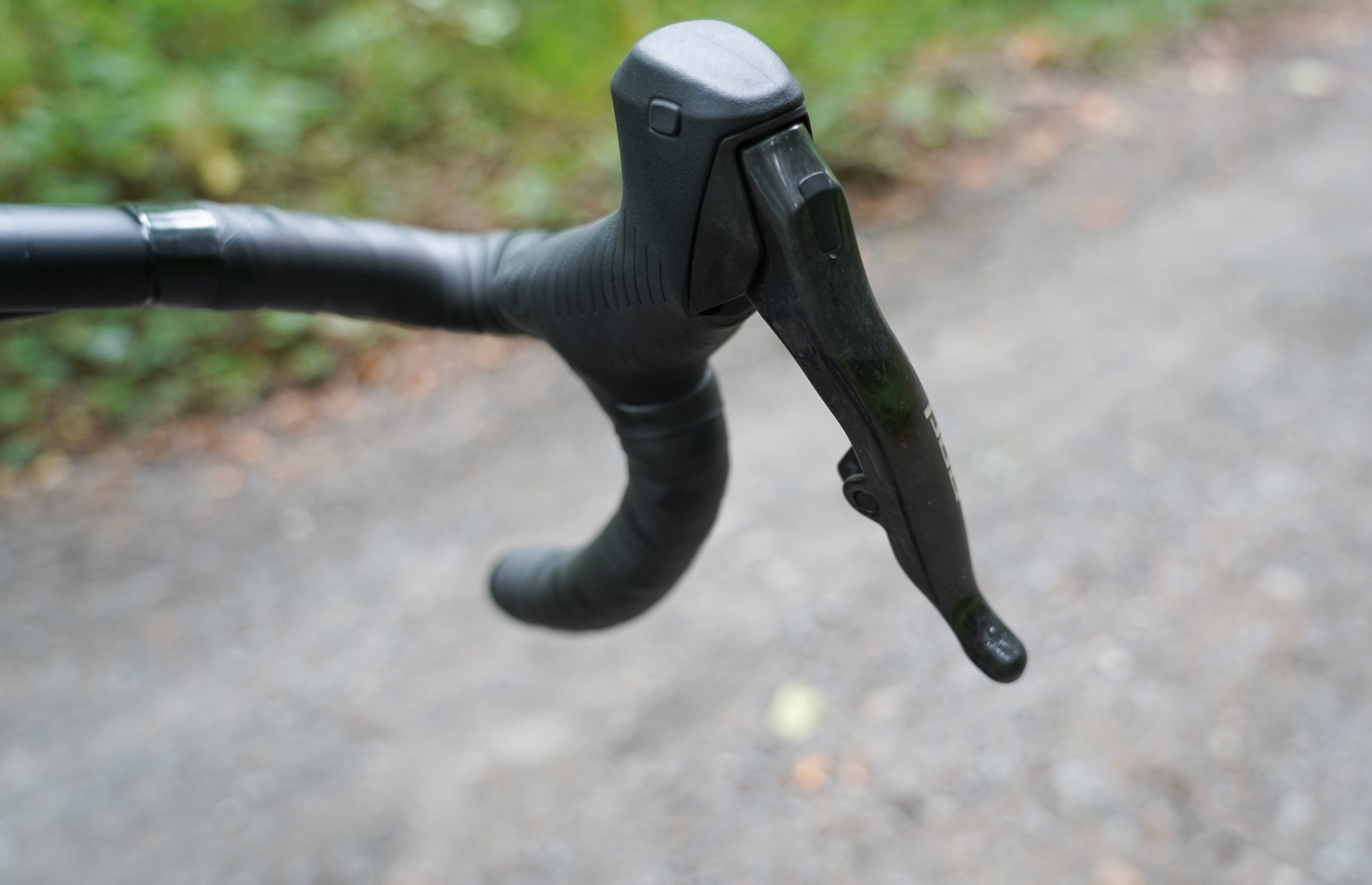
As mentioned above, the new drivetrain is paired with the brake callipers and shift-brake levers taken from the newest Red AXS road groupset, which is a good thing. Between the fully redesigned hoods, levers and the calipers themselves, SRAM may just have created the best brakes on the road and gravel market. Not only are the hoods very comfortable, but the powerful brakes truly allow for single-finger braking.
I'm a big fan of the bonus buttons as well. While the buttons are rather small, the location of the inside of the elongated hoods, just above the thumbs, works well. Like the blips, you can assign the button's function, be it managing your dropper post, shifting gears or scrolling through the pages of your computer. I use them for shifting, as they work really well if you tend to spend a lot of time on top of the hoods rather than in the drops.
UDH Compatibility Conundrum
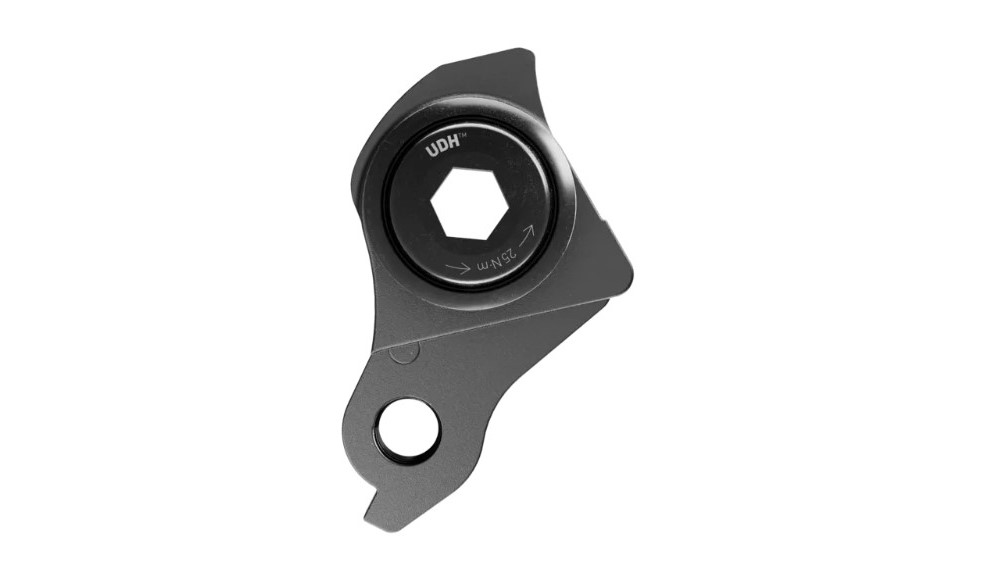
The new drivetrain is only compatible with frames that have a UDH (Universal Derailleur Hanger) interface. This technology was introduced by SRAM in 2019, initially aimed at eliminating frame-specific rear derailleur hangers in mountain bikes while also standardizing the position of the derailleur with the cassette for better and more consistent shifting performance. The system integrates the derailleur hanger into the frame dropout around the axle.
SRAM's Full Mount derailleurs make use of the UDH interface but don't involve an actual hanger. A Full Mount derailleur attaches directly onto the frame, on either side of the dropout. Since the Full Mount launched in 2023, the system has garnered favourable reviews for its robustness and simplicity. However, up until now, the UDH and Full Mount technology was mostly considered a mountain bike thing. But gravel certainly stands to gain from its benefits, like improved robustness, shifting performance over rough terrain, and chain retention.
Luckily, the adoption rate of UDH is growing among frame manufacturers, and brands like Trek, Specialized, Canyon, Lauf, Cervelo and 3T already offer some gravel bike models with a UDH interface. However, there's no way to convert an existing non-UDH frame to become UDH or Full Mount compatible – at least, not in a way SRAM will acknowledge. Some aftermarket conversion kits can be found on the internet but SRAM says it will void any warranty if those products are used.
For consumers, this means that if you want to upgrade to this groupset, your current bike must already sport a UDH interface, or you'll have to buy a new frame.
For frame manufacturers, the Full Mount technology may create a bit of a conundrum as SRAM is basically saying, 'conform or be left out.'
Shimano and Campagnolo have not (yet) fully embraced UDH technology. While compatible when used with the right parts, it's not all straightforward. For example, Shimano and Campagnolo's Direct Mount derailleurs no longer include a linkage between the derailleur itself and a normal derailleur hanger. Shimano claims this creates a more precise derailleur alignment—not unlike the UDH raison d'être. However, unless you buy a specific Direct Mount compatible UDH hanger, you'll need to put the B-Link back in, thereby negating any benefits.
This sparks a lot of questions:
- Are non-UDH frames soon going to go the way of the rim brake?
- Will frame manufacturers conform to UDH or will we see allegiances formed between bike and component manufacturers?
- Is SRAM forcing Shimano and Campagnolo's hand?
As for the answers, we'll have to wait and see.
Pricing

The pinnacle of SRAM's gravel product line comes with a premium price tag. The groupset with power meter retails for $3,979 / £3,980. Without the power meter, it costs $3,529 / £3,530
With bikes costing a fortune these days, I no longer get much of a sticker shock when I see these prices come through. However, what made me do a double-take in this groupset specifically, is the increased cost of wear parts. The cassette alone is $650 / £600 and no alternate option is available as of yet. That's $400 more than the current top-end XPLR cassette and at least $200 more than an Eagle cassette. The flattop chain, too, has gone up $89-99 versus the current flattop Red chain at $75. Luckily, the new groupset is backwards compatible with all flat-top chains.
For groupset comparison, Shimano's top-end gravel groupset, the 2x12 GRX Di2 without power meter, costs around $2,533/£2,100. It offers a 506% gear range (when built with an HG710 11-36t cassette) and weighs 2,747 grams without a power meter. Is the extra grand worth the 13th cog, 349 grams of weight-savings and hanger-free derailleur?
Verdict

Incredibly lightweight, bombproof, best-in-class braking, and more gears: there is a lot to like about the new Red XPLR AXS groupset. But is it enough to convince me to put my non-UDH bike on the market right now in order to switch over to this UDH-requiring groupset? If I were a serious biker racer, yeah maybe.
The hanger-less Full Mount derailleur certainly is an asset, not only because of its crisp and reliable shifting performance but also because of its robustness. Putting a bike on a plane to travel to events is always a risk. You never quite know what state your bike is going to be in on the other end. The Full Mount rear derailleur can really take a beating – during travel and on the race course. A couple of extra teeth on the upper end of the gear range are always welcome, both in order to conquer climbs and for the option to run a bigger chainring in the front. And the gradual gear jumps in the lower-end of the cassette will be an asset in race pace and finish sprint.
As a non-racer on the more adventure-y end of the gravel spectrum, I am not the targeted demographic for this groupset. It's made for those who need to get the most out of their bikes. Lachlan Morton won this year's 200-mile Unbound Gravel race with an average speed of 22mph. The women's race finished in a nine-person sprint finish. In gravel racing, every watt, every minute, every gear counts. While the 12t sprocket and weight reduction is a mere nice-to-have for a rider like me, it can be a must-have in racing.
With that said, the robustness and shifting performance of the Full Mount rear derailleur are draws, and I'm certain we will see more of this technology in future releases. Thus, upgrading to a frame with UDH is not a bad idea in general.
More than anything, what I wish my current XPLR groupset had from this release are the shift-brake levers and brake callipers. And there, we're in luck. The shift-brake controls are backwards compatible with all AXS groups, thus one can simply upgrade these components without having to obtain a new frame.
What I've learned in my 11 years in the industry is that SRAM does trickledown technology very, very well and so one thing's for certain: my non-UDH bike's days are numbered.






